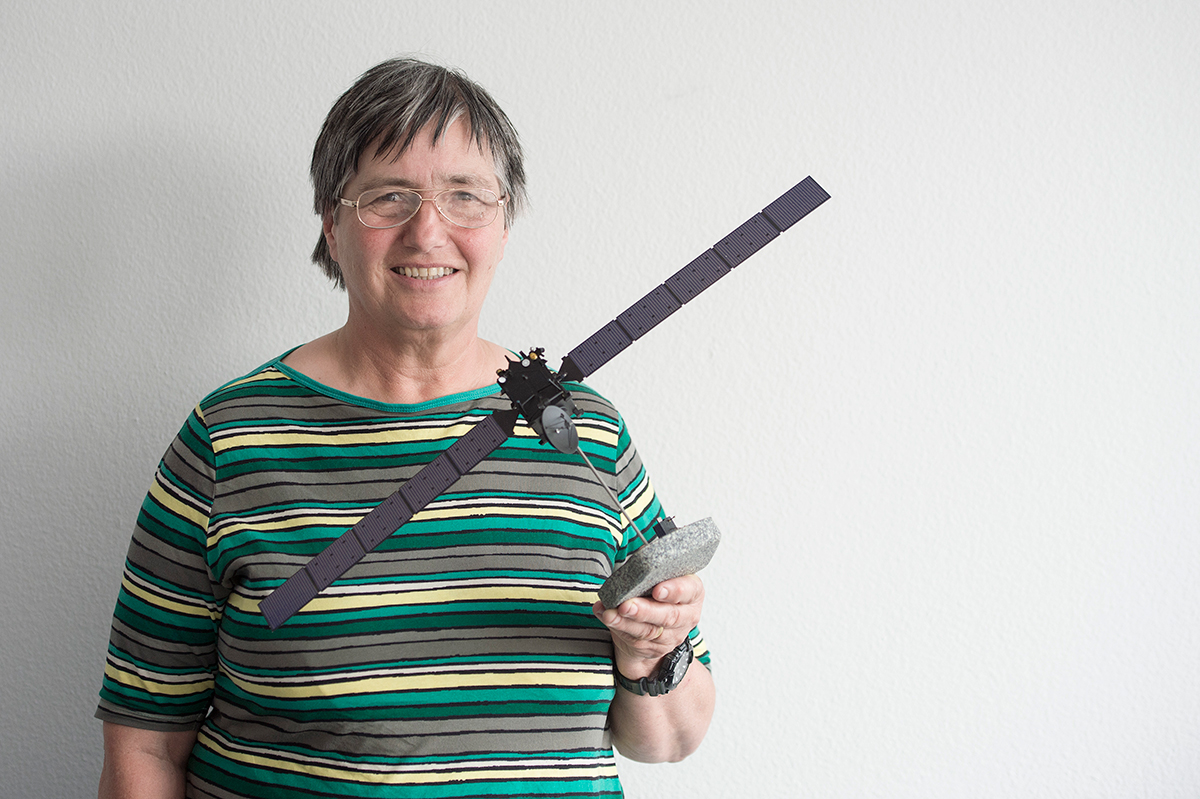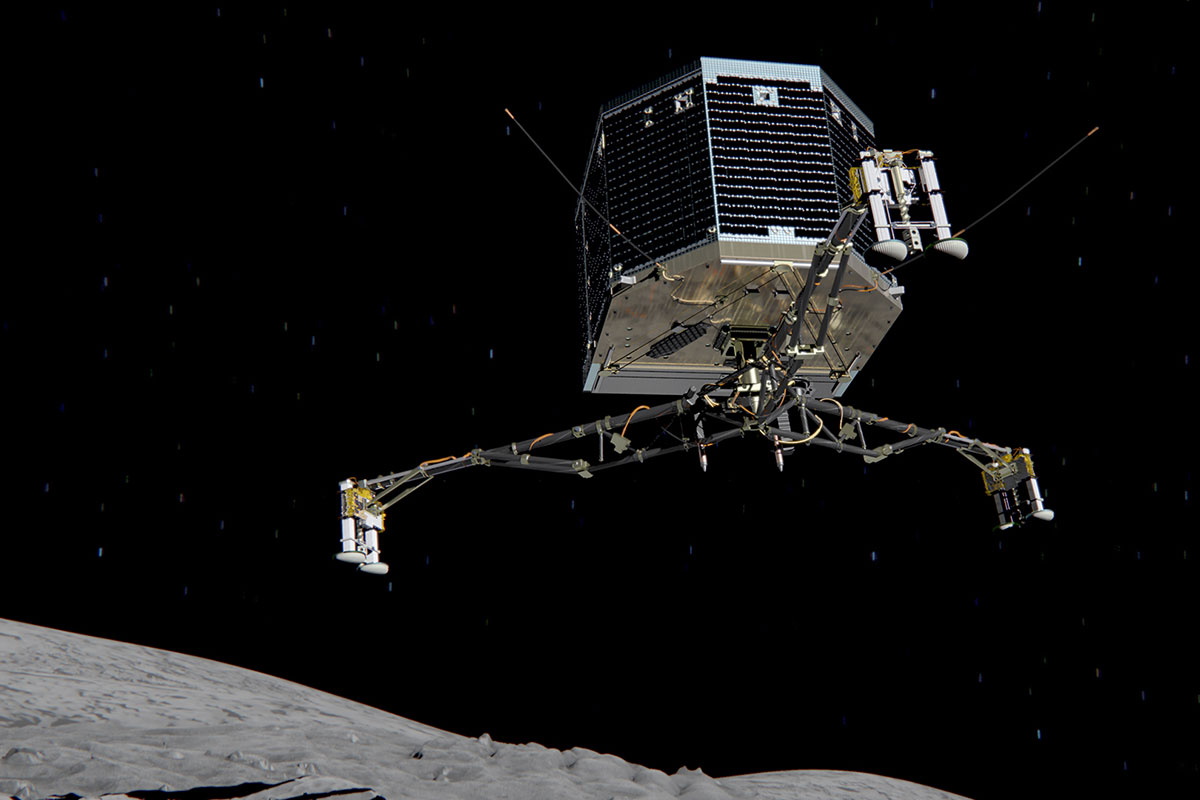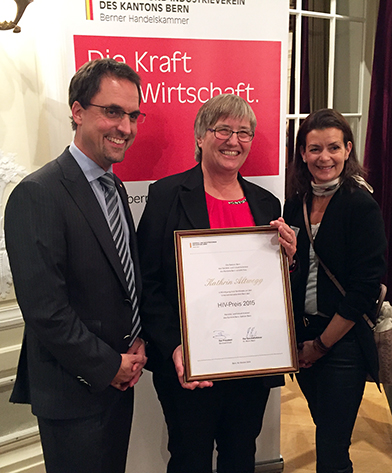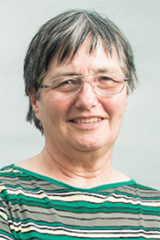"The comet is much more interesting than we expected"
The ESA Rosetta probe has been orbiting the comet 67P/Churyumov-Gerasimenko for about a year. The University of Bern is taking part in the mission with the mass spectrometer ROSINA. In an interview, Kathrin Altwegg, a Bern resident and research scientist specialised in outer space, reviewed the discoveries they've made up until now, offers a forecast for Rosetta’s spectacular exit – and explains how much the award from the Bernese Handels- und Industrieverein she received on October 19 means to her.
"uniaktuell": Around a year ago, the Rosetta probe reached the comet 67P/Churyumov-Gerasimenko and the mass spectrometer ROSINA on board the spaceship recorded its dimensions. Has the mission fulfilled the expectations that everyone had for it so far?
Kathrin Altwegg: Entirely. Thanks to its very irregular form, the comet is much more interesting than we had expected. It has many layers and actually consists of two halves. In a way, we got two comets for the price of one. Generally speaking, the probe functions superbly, except that it has a rough time with the comet dust.
Looking back, which discoveries were most important discoveries for you? And which surprised you the most?
The most important was certainly the high deuterium content in the comet water. That tells us that terrestrial water did not originate exclusively from comets like these. Also, ROSINA has recently discovered extraordinarily rich organic material. This indicates that comets contributed to life developing here. The composition of the comet also indicates that its material is older than that of the solar system.

Speaking of the solar system: What new findings has Rosetta brought for debate since its formation?
What surprises us most concerning this is the high level of molecular oxygen on Churyumov-Gerasimenko. Everyone thought oxygen was too reactive to "survive" for billions of years without binding to other substances. Even though we don't yet understand everything, the oxygen also seems have originated very early on, which will probably mess up some theoretic models on the formation of the solar system. "Chury" also seems to have been formed by some very slow impacts without having been part of an intense collision. Most models on the formation of the solar system presume collisions of much higher speeds. This is another instance of history having to be rewritten.
In July, the comet lander "Philae" communicated with ESA ground control again for the first time in months. How do matters stand now?
Due to the great amount of dust, Rosetta is currently hundreds of kilometres away from the comet and therefore too far away to "talk" to Philae. The fact that Philae is probably lying in an awkward position on its side makes communication even more difficult. At the end of October when the comet flies away from the sun and is less active again, Rosetta should be able to approach "Chury". Then we will try to make contact with the lander again. We don't know if we will be successful.

What steps are next on the agenda for Rosetta?
Right now Rosetta is investigating the interaction between comet and solar wind at a distance of around 1500 kilometres from "Chury". At the end of October at the latest, we will try to get closer to the comet to analyse how it changed in the active phase this summer. In about a year, in September 2016, we will land Rosetta on the comet. However, this will not be a soft landing. We will fly downward in a spiral orbit for at least two months until we land on the comet. Once Rosetta has hit, communication will no longer be possible. However, we will probably have fantastic results in the last few weeks thanks to the proximity to the core. The mission will have to end in the autumn of 2016 as the distance to the sun will be too far and we would have to hibernate Rosetta again. This makes no sense with such an old space probe and also considering the low amount of fuel that is left..

You deal with researchers from around the world day in and day out. How important is this distinction from the Bernese Handels- und Industrieverein [Chamber of Commerce and Industry] to you?
We belong to Bern. The money for our research comes from Bern and from Switzerland. Our university has its roots in Bern. Although, as scientists, we naturally seek acknowledgement from other researchers around the world, I am proud that we are positioned in Bern and that our work is seen as positive in the canton and by the economy. For these reasons, this prize is very special to me.
About Kathrin Altwegg

Prof. Dr. Kathrin Altwegg was born 1951 in Balsthal, Solothurn. She’s been associated professor for experimental physics at the Physics Institute of the University of Bern since 2002. She will retire in 2016. Kathrin Altwegg studied physics and experimental physics at the University of Basel. From 1996 to 2009 Altwegg was project manager for the mass spectrometer ROSINA, built for the European Space Agency’s (ESA) Rosetta comet mission. Since 2009 she’s heading the project. She also patricipated in the development of the ion mass spectrometer for the comte probe Giotto which flew by comet Halley in 1982.
Contact:
Prof. Dr. Kathrin Altwegg, Physikalisches Institut, Weltraumforschung und Planetologie (WP), Tel. : +41 31 631 44 11, kathrin.altwegg@space.unibe.ch
About the HIV prize
On 19 October 2015 the Bernese Handels- und Industrieverein [HIV; Chamber of Commerce and Industry] awarded astro physicist Kathrin Altwegg with the annual HIV prize. The HIV thus honors Altweggs commitment to raise enthusiasm for science among the youth. The HIV prize is awarded to persons who have made an outstanding contribution to the sucess of Bern as a business location.